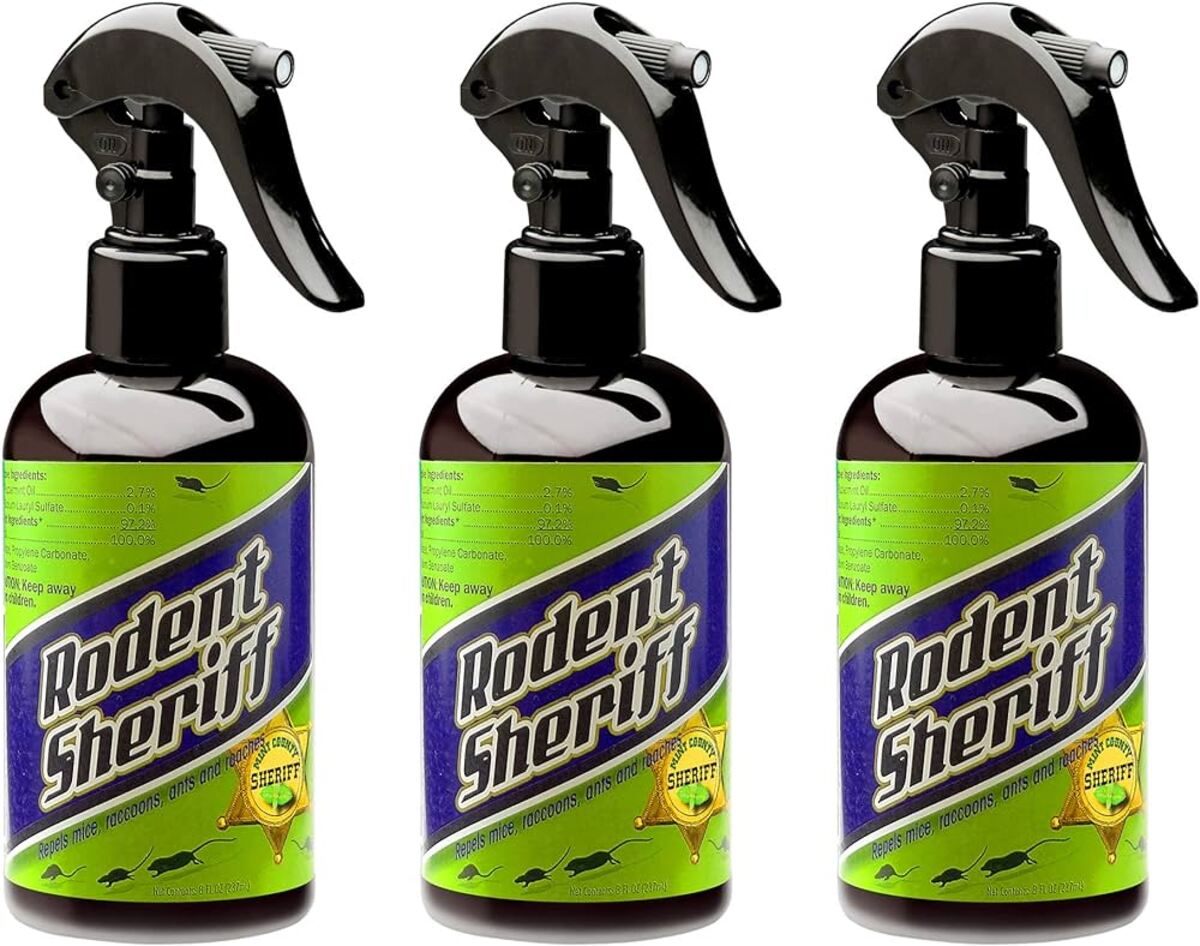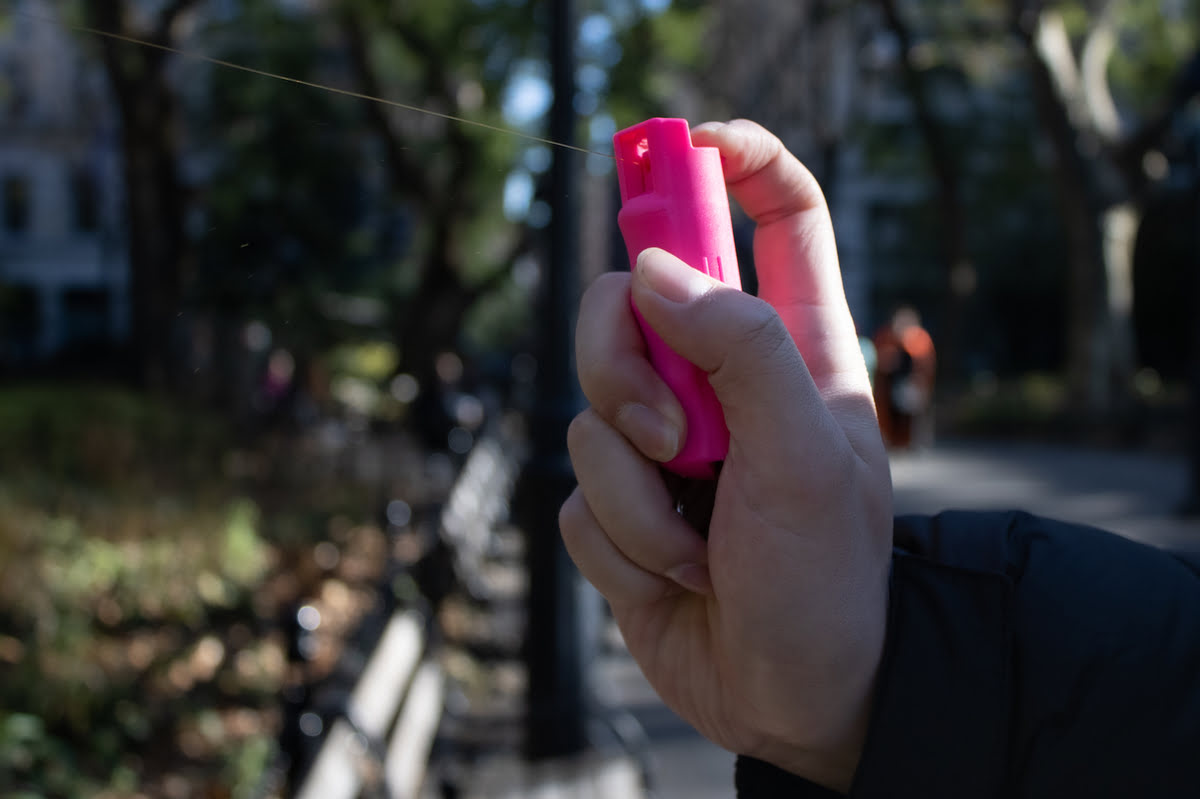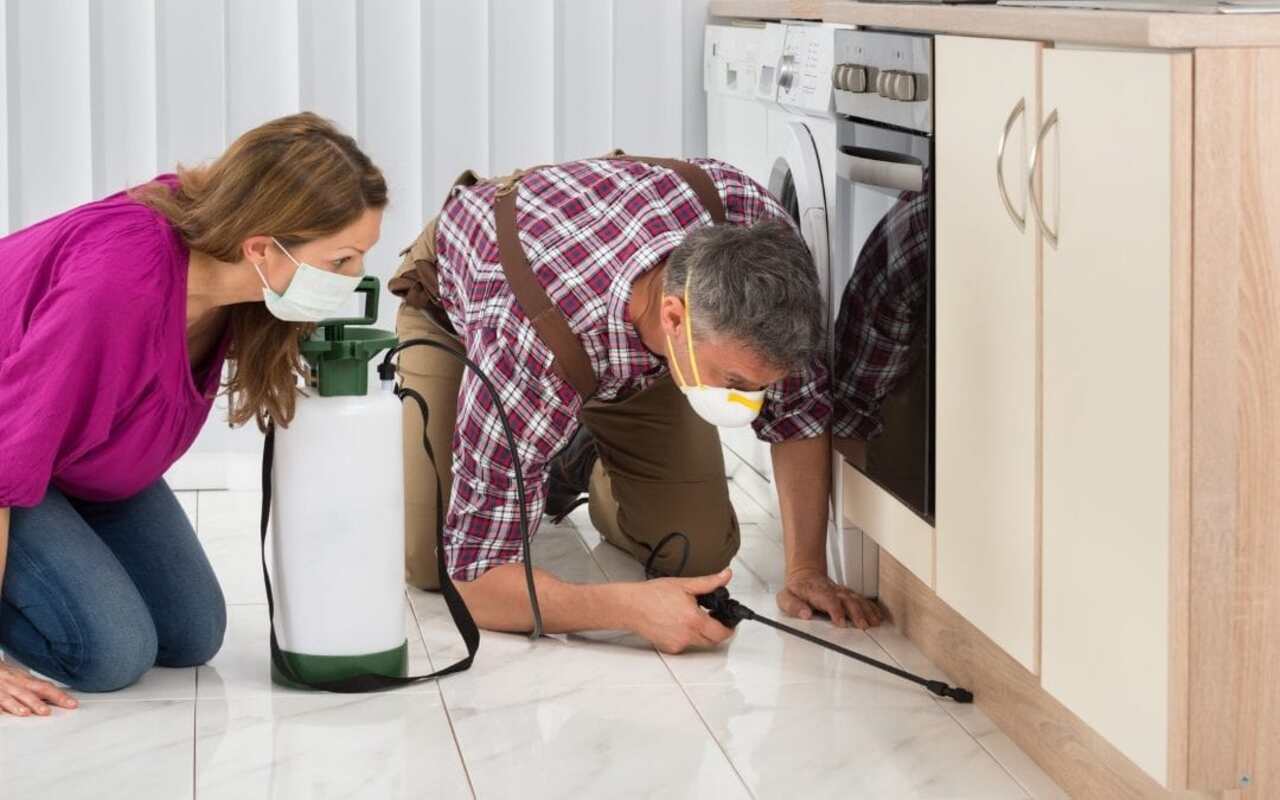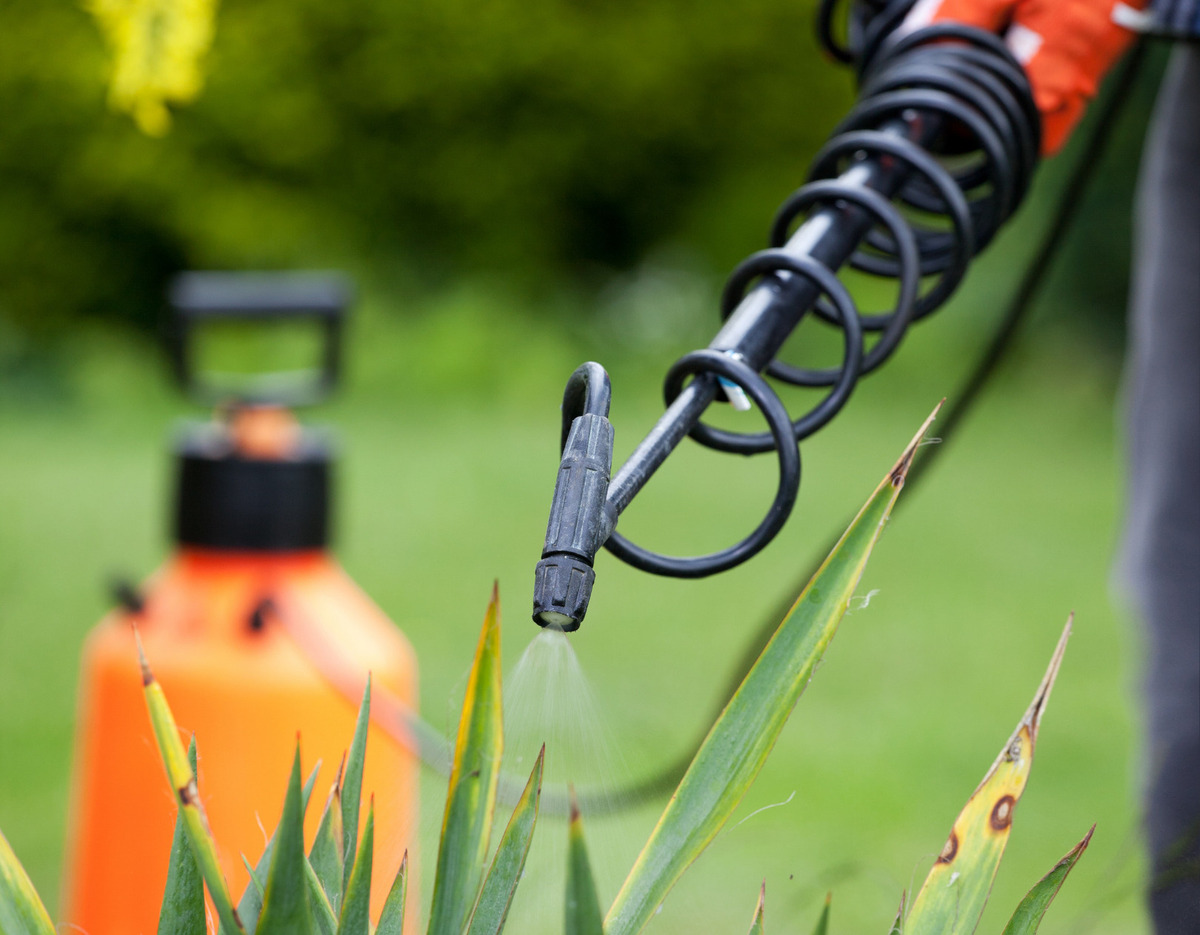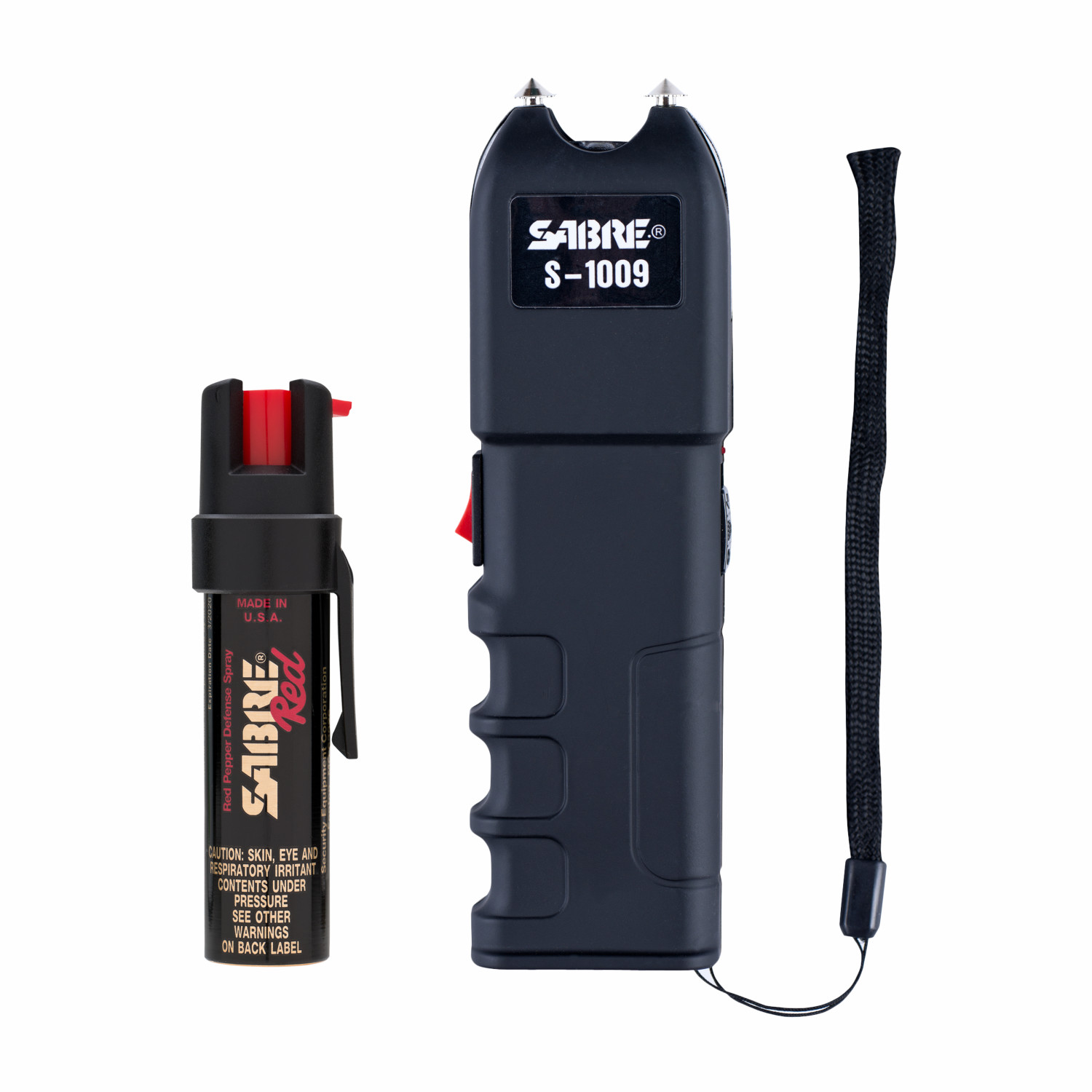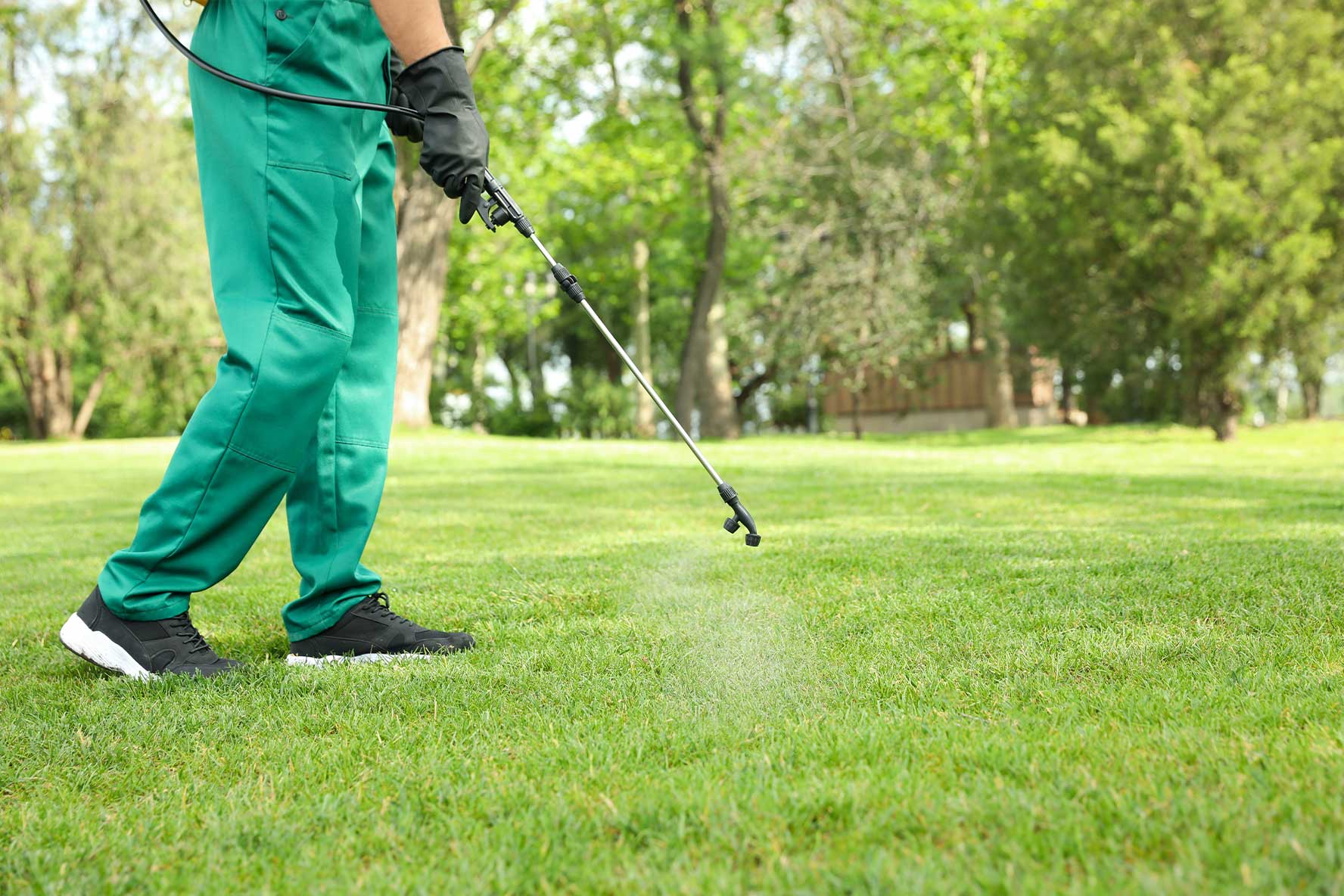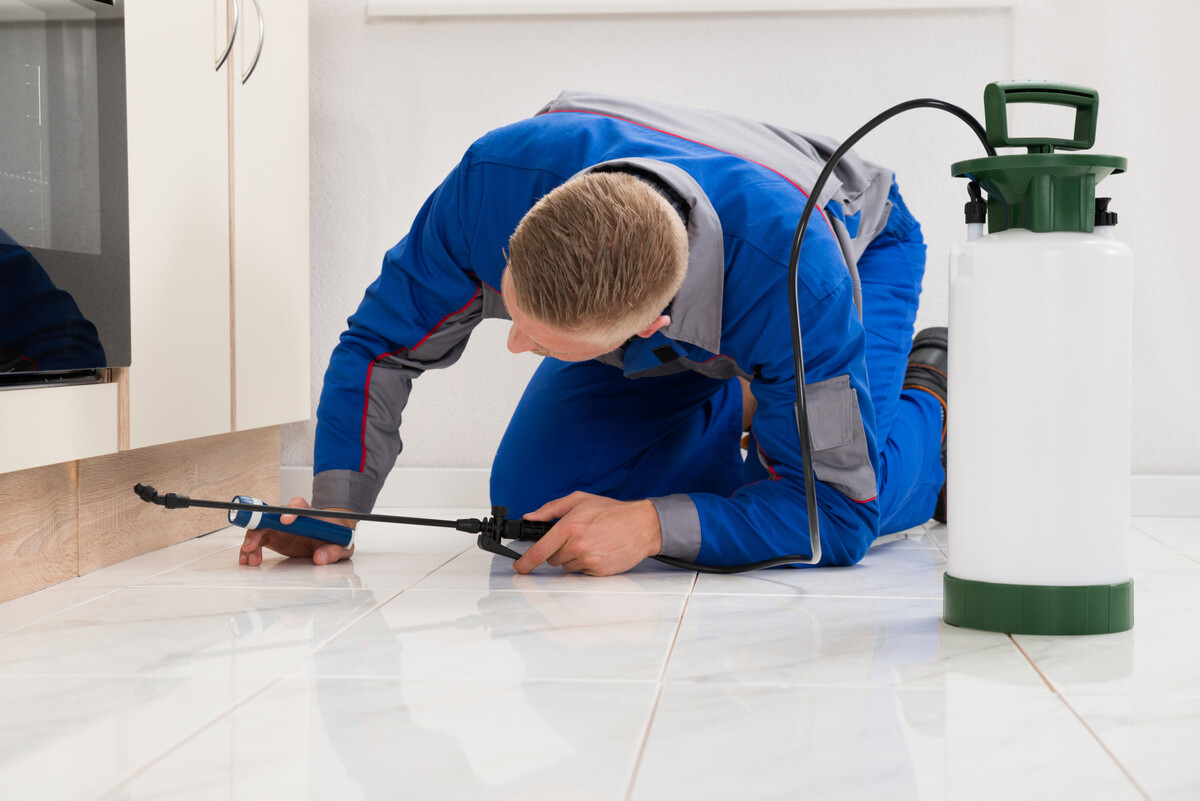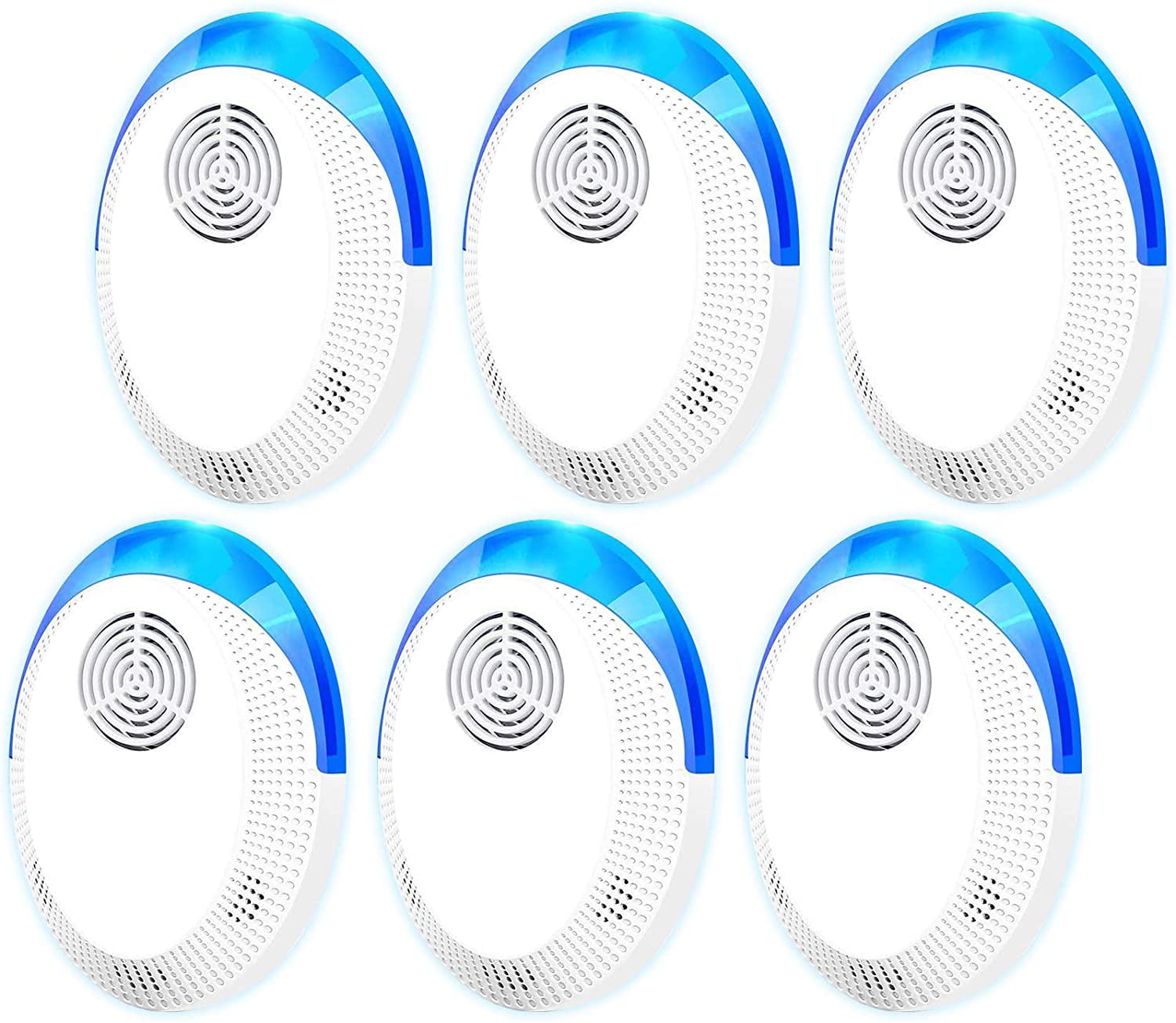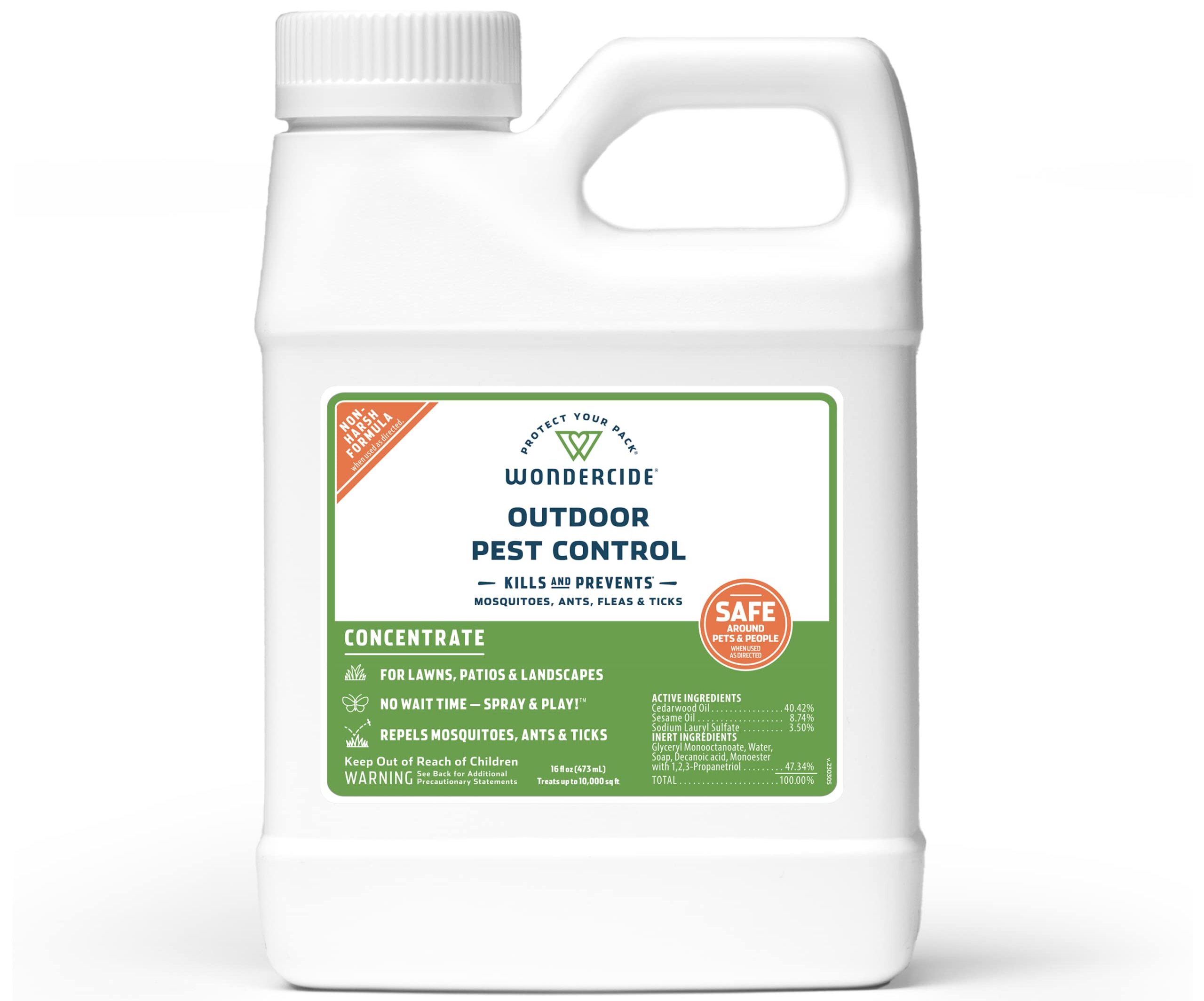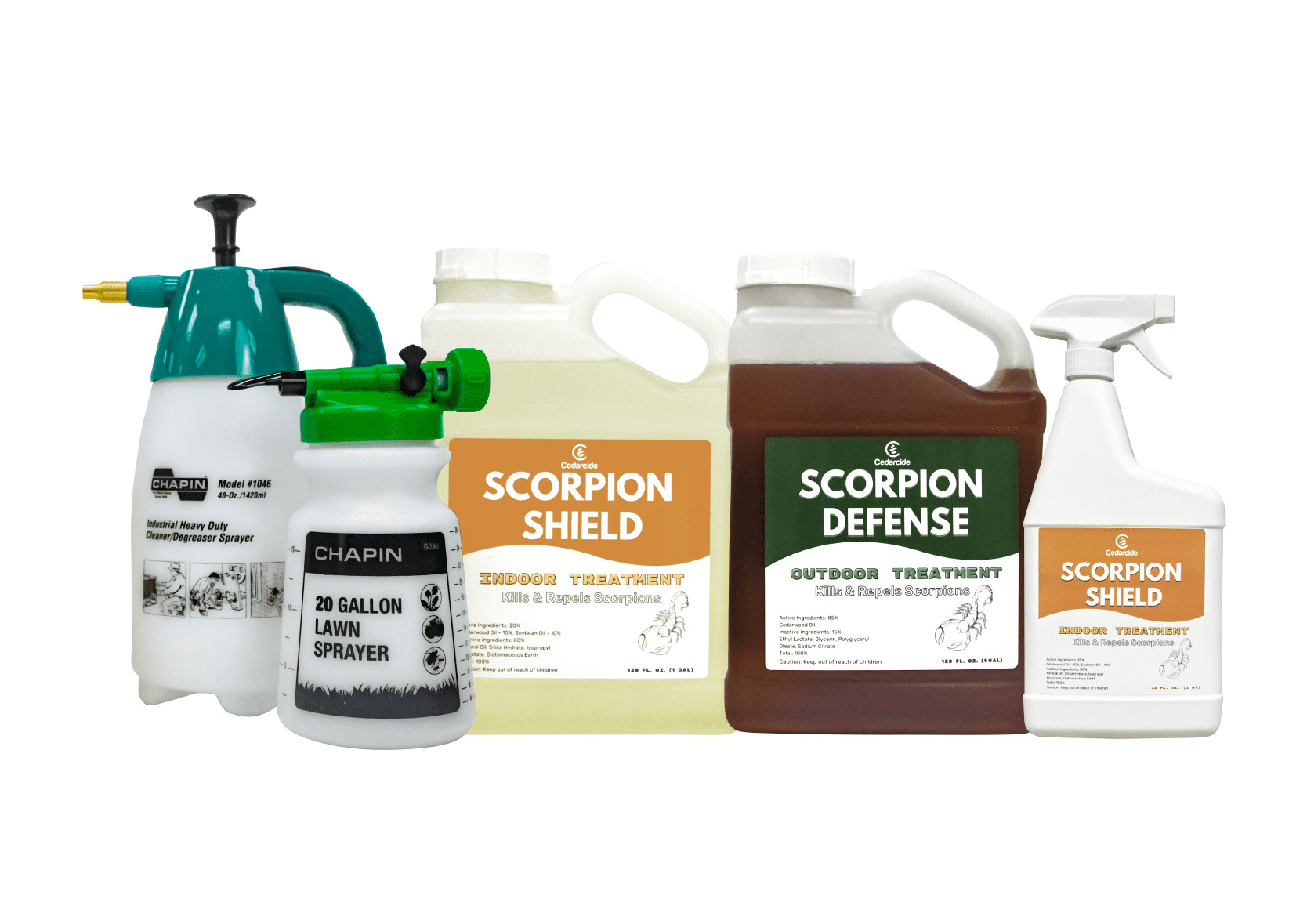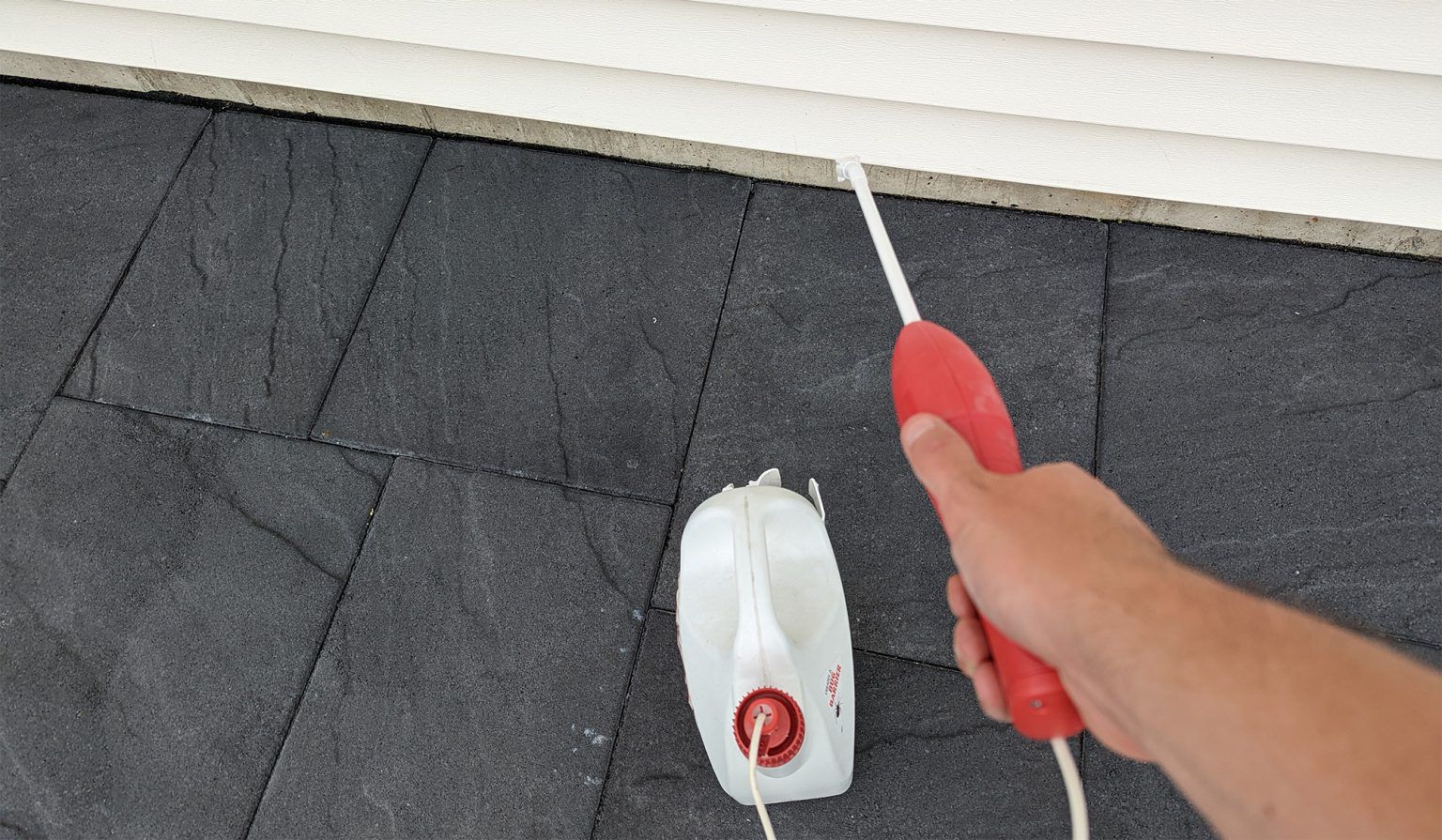Home>Home Security and Surveillance>How To Control Pest Using Bomb Foggers And A Home Defense Spray
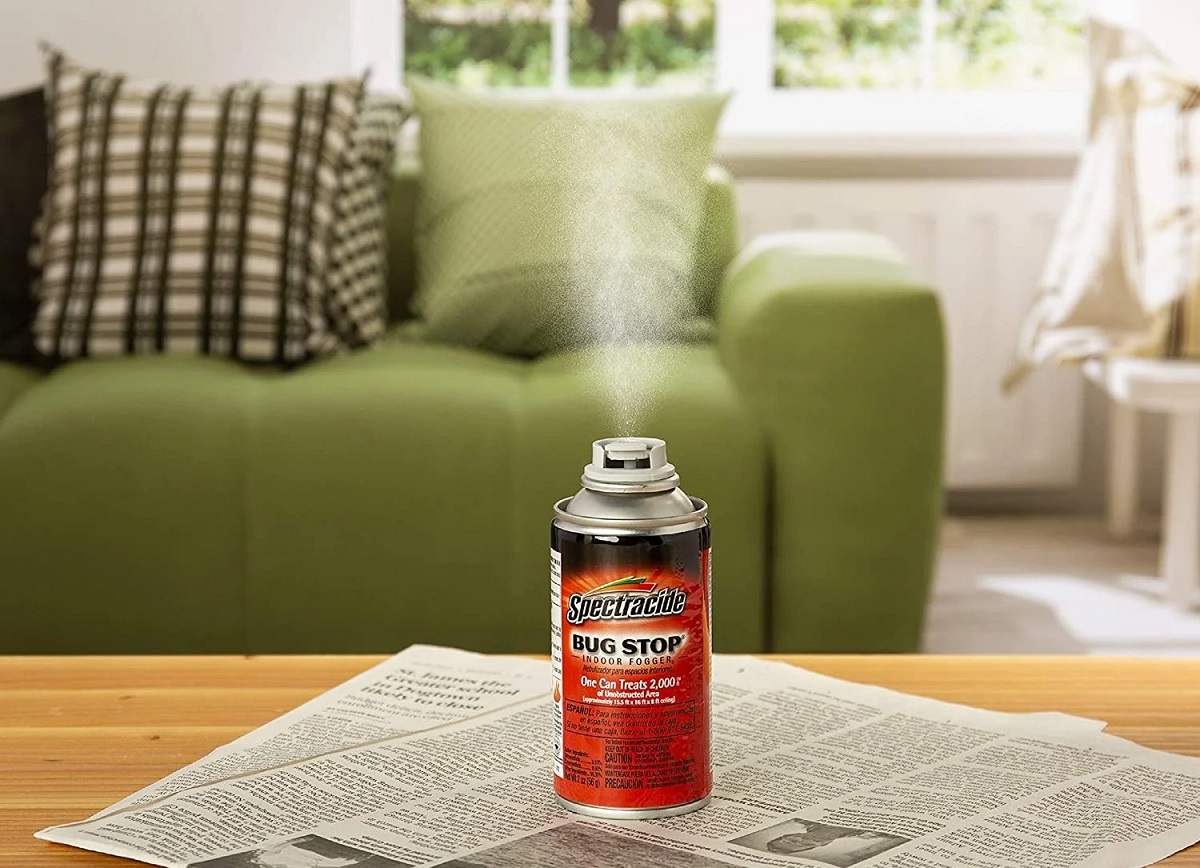

Home Security and Surveillance
How To Control Pest Using Bomb Foggers And A Home Defense Spray
Modified: March 6, 2024
Looking to protect your home? Learn how to control pests effectively using bomb foggers and a home defense sprag. Enhance your home security and surveillance with these simple techniques.
(Many of the links in this article redirect to a specific reviewed product. Your purchase of these products through affiliate links helps to generate commission for Storables.com, at no extra cost. Learn more)
Introduction
Pest infestations can be a nuisance, causing damage to your home and compromising your sense of security. From pesky insects to rodents, dealing with pests requires effective and comprehensive solutions. Home security and surveillance systems go a long way in protecting your property, but it’s equally important to address pest control to ensure a safe and comfortable living environment.
In this article, we will explore various pest control methods, with a particular focus on bomb foggers and home defense sprays. These two approaches offer convenience, affordability, and effectiveness in combating pests. We will discuss how they work, how to use them properly, and the factors to consider when choosing the right pest control method.
Before we dive into the specifics of bomb foggers and home defense sprays, it’s essential to understand the concept of pest control and why it is necessary for every homeowner.
Understanding Pest Control
Pest control refers to the management and elimination of undesired insects, rodents, and other pests that can have a negative impact on your home and surroundings. These pests can range from common household insects like ants, cockroaches, and spiders, to more intrusive pests like rats, mice, and termites.
An effective pest control strategy not only helps in eradicating existing infestations but also focuses on preventing future invasions. By implementing proper pest control measures, you can protect your family from potential health risks, prevent property damage, and maintain a clean and hygienic living environment.
Types of Pest Control Methods
Pest control methods can vary depending on the type of pest, the severity of the infestation, and personal preferences. Some common pest control approaches include traps, baits, pesticides, insecticides, and biological control methods.
Traps, such as glue traps or snap traps, are commonly used to catch rodents and insects. Baits, on the other hand, attract pests to consume a toxic substance, leading to their elimination. Insecticides and pesticides are chemical-based solutions that kill or repel insects and other pests. Biological control methods involve introducing natural predators or pathogens to control the pest population.
Two popular pest control methods that are easy to use and highly effective are bomb foggers and home defense sprays. Let’s take a closer look at how these approaches work and how you can utilize them for pest control in your home.
Key Takeaways:
- Using bomb foggers and home defense sprays can effectively eliminate pests, protect your property, and promote a safe and healthy living environment. Prioritize safety, follow instructions, and consider long-term prevention methods.
- When choosing a pest control method, consider factors such as the type of pest, severity of infestation, safety, effectiveness, and budget. Integrated Pest Management (IPM) approaches can offer long-term prevention and peace of mind.
Read also: 14 Unbelievable Pest Control Fogger For 2024
Understanding Pest Control
Pest control plays a vital role in maintaining a healthy and comfortable living environment. Whether it’s dealing with an ant infestation in the kitchen or preventing termite damage to your home, understanding the basics of pest control is essential to effectively manage and eliminate pests.
Pests, such as insects, rodents, and other organisms, can pose a variety of problems for homeowners. They can cause damage to structures, contaminate food, spread diseases, and even trigger allergies in some individuals. That’s why it’s crucial to implement an effective pest control strategy that not only targets existing infestations but also focuses on prevention.
The Importance of Pest Control
There are several reasons why pest control is important:
- Protecting Your Property: Pests can cause significant damage to your home, including chewing through wiring, gnawing on wooden structures, and creating unsightly holes. By implementing proper pest control measures, you can safeguard your property and prevent expensive repairs.
- Promoting Hygiene and Sanitation: Pests like cockroaches, flies, and rats are carriers of various diseases and bacteria. They can contaminate your food and surfaces, putting your family’s health at risk. By eliminating these pests, you can maintain a clean and sanitary living environment.
- Preventing Allergies and Respiratory Issues: Some pests, such as dust mites and certain insects, can trigger allergies and respiratory problems in susceptible individuals. Proper pest control practices can reduce allergens and create a healthier home environment.
- Preserving Your Peace of Mind: Dealing with pests can be stressful and unsettling. By implementing effective pest control methods, you can regain your peace of mind and create a comfortable living space.
Fundamental Principles of Pest Control
Successful pest control involves following a few fundamental principles:
- Inspection: Regular inspections are crucial for identifying signs of pest activity, such as droppings, chewed wires, or nests. By detecting an infestation early on, you can take prompt action to prevent it from spreading.
- Identification: Correctly identifying the pest species is essential for determining the most appropriate control methods. Different pests may require different treatments and strategies.
- Integrated Pest Management (IPM): IPM is a comprehensive approach that involves a combination of preventive measures, monitoring, and targeted treatments. It focuses on minimizing pesticide usage and emphasizes long-term prevention.
- Environmental Considerations: When choosing pest control methods, it’s crucial to consider the impact on the environment, wildlife, and non-targeted organisms. Opt for environmentally friendly and humane solutions whenever possible.
By understanding the importance of pest control and adopting these fundamental principles, you can confidently address pest issues in your home. In the following sections, we will explore two popular pest control methods: bomb foggers and home defense sprays, and how they can be utilized effectively.
Types of Pest Control Methods
When it comes to pest control, there is a wide range of methods available to homeowners. The choice of method depends on factors such as the type of pest, the severity of the infestation, and personal preferences. Let’s explore some common pest control methods:
- Traps: Traps are a classic solution for capturing and controlling pests. There are various types of traps available, including glue traps, snap traps, and live-catch traps. Glue traps are adhesive sheets that pests get stuck on, while snap traps use a spring-loaded mechanism to snap shut when triggered. Live-catch traps, as the name suggests, allow you to capture pests alive and release them elsewhere.
- Baits: Baits work by attracting pests to consume a toxic substance. They are particularly effective for controlling pests that are difficult to eliminate using other methods. Baits are available in different forms, such as gels, granules, and blocks. The bait is laced with a substance that is enticing to the target pests but lethal when ingested.
- Pesticides and Insecticides: Chemical-based solutions like pesticides and insecticides are widely used for pest control. They come in various formulations, including sprays, powders, and concentrates. These products contain active ingredients that target specific pests, disrupting their life cycles or killing them directly. It is important to use pesticides and insecticides carefully, following the instructions provided by the manufacturer, to ensure safety and effectiveness.
- Biological Control: Biological control involves using the natural enemies of pests to control their population. This method utilizes organisms such as predatory insects, parasites, and pathogens that feed on or infect pests. Biological control is often favored for its eco-friendly and sustainable approach. For example, introducing ladybugs into a garden can help control aphid populations.
- Physical Barriers: Physical barriers are preventive measures that keep pests out of your home or garden. These barriers can include screens, nets, and fences. For example, installing window screens can effectively prevent insects from entering your house, while a mesh netting can protect your garden from birds and small animals.
It is important to note that some pest control methods can be used in combination for more effective results. Integrated Pest Management (IPM) is a holistic approach that combines various pest control techniques to minimize the use of chemicals and ensure long-term prevention.
When deciding on the appropriate pest control method for your situation, consider factors such as the type of pest, the extent of the infestation, the potential risks involved, and the environmental impact. Consulting with a professional pest control service can also provide valuable insights and guidance in choosing the right method for your specific needs.
Now that we have a general understanding of the different pest control methods available, let’s delve into two notable approaches: bomb foggers and home defense sprays, which offer convenience and effectiveness in tackling pest infestations.
Bomb Foggers: An Effective Pest Control Solution
Bomb foggers, also known as total release foggers or bug bombs, are a popular and effective method for controlling pests. They provide a convenient and comprehensive solution for treating large areas infested with insects, including flies, mosquitoes, fleas, and roaches. This method disperses a fine mist or fog of pesticide throughout the space, reaching hidden areas and eliminating pests.
How Do Bomb Foggers Work?
Bomb foggers work by releasing insecticides in aerosol form into a sealed space. The aerosol canister contains a pressurized pesticide that is activated by depressing a valve or button. Once activated, the canister releases the fog, which quickly fills the room, penetrating cracks, crevices, and other hiding spots where pests may be residing.
The insecticides used in bomb foggers are formulated to have a residual effect, meaning that they remain active for a certain period of time after application. This allows the fog to not only kill the pests present but also continue to provide protection against future infestations.
Advantages of Bomb Foggers
Bomb foggers offer several advantages that make them a preferred choice for certain pest control situations:
- Easy to Use: Bomb foggers are designed to be user-friendly and require minimal setup. Simply follow the instructions provided by the manufacturer, ensure proper ventilation, and leave the area after activating the fogger.
- Treats Large Areas: Bomb foggers are ideal for treating large spaces, such as basements, attics, and garages, where pests may be difficult to reach with other methods.
- Comprehensive Pest Control: The fog released by bomb foggers can penetrate into cracks, crevices, and hidden corners, ensuring thorough coverage and targeting pests in hard-to-reach areas.
- Residual Effect: The residual effect of the insecticides used in bomb foggers provides continued protection against pests even after the initial treatment. This helps to prevent future infestations.
- Convenience: Bomb foggers offer convenience by providing a one-time treatment that covers a large area. This can be especially useful for homeowners who prefer a hands-off approach to pest control or those dealing with severe infestations.
While bomb foggers can be highly effective in eliminating pests, it’s important to use them properly and take necessary safety precautions. Ensure that you read and follow the instructions provided by the manufacturer, including wearing protective gear, covering food and drinking water, and vacating the treated area for the recommended duration.
In the next section, we will explore the use of home defense sprays as another effective approach to pest control.
Understanding Home Defense Sprays
Home defense sprays are a popular and convenient method for controlling pests in and around your home. These sprays are formulated with insecticides or pesticides that target a wide range of pests, including ants, spiders, roaches, and other crawling insects. Home defense sprays offer an effective way to create a barrier of protection and prevent pests from entering your living space.
How Do Home Defense Sprays Work?
Home defense sprays typically come in ready-to-use spray bottles or concentrate forms that can be diluted with water. The sprays contain active ingredients that are effective in killing and repelling pests. To use a home defense spray, simply apply it to areas where pests are likely to enter or dwell, such as windowsills, doorways, baseboards, and other entry points.
When pests come into contact with the sprayed area, they are either killed immediately or repelled. Home defense sprays create a barrier that acts as a deterrent for pests, preventing them from invading your home and causing further infestations.
Advantages of Home Defense Sprays
Home defense sprays offer several advantages that make them a popular choice for pest control:
- Easy to Use: Home defense sprays are designed for easy and convenient use. They usually come in a spray bottle with a nozzle that allows for precise and controlled application.
- Targeted Solution: Home defense sprays allow you to target specific areas where pests are likely to enter, such as cracks, crevices, and entry points. This helps to minimize exposure to pesticides and reduce potential risks.
- Invisible Barrier: Once applied, home defense sprays create an invisible barrier that acts as a deterrent. This prevents pests from crossing the barrier and entering your home, providing long-lasting protection.
- Safe for Indoor Use: Many home defense sprays are labeled for indoor use, making them a suitable option for controlling pests inside your home. However, it’s essential to follow the manufacturer’s instructions and recommendations for use, especially if you have children or pets.
- Versatile Application: Home defense sprays can be used in various areas of the home, including kitchens, bathrooms, basements, and garages. They are effective against a wide range of pests, making them a versatile solution for homeowners.
While home defense sprays can be effective in controlling pests, it’s important to follow the instructions provided by the manufacturer for safe and proper use. It’s also advisable to wear protective gear, such as gloves and a mask, when applying the spray and to keep the treated areas well-ventilated.
Now that we have discussed both bomb foggers and home defense sprays, let’s explore how to use these pest control methods effectively in the next sections.
Read also: 10 Unbelievable Pest Control Spray For 2024
How to Use Bomb Foggers for Pest Control
Bomb foggers can be highly effective in eliminating pests when used correctly. Here are the steps to follow when using bomb foggers for pest control:
- Prepare the Area: Before using a bomb fogger, ensure that you prepare the area properly. Remove or cover any exposed food, utensils, or dishes. Seal off any sensitive electronic equipment or cover them with plastic sheets to protect them from the fog.
- Read and Follow Instructions: Every bomb fogger comes with specific instructions provided by the manufacturer. It is crucial to thoroughly read and understand these instructions before use. Pay attention to the recommended coverage area, as using too many or too few foggers can affect the overall effectiveness. Also, note any safety precautions, such as wearing protective gear and evacuating the area during fogging.
- Seal the Area: Close all windows, doors, and vents to create a sealed environment. This ensures that the fog remains contained within the treated area, maximizing its efficiency in targeting pests.
- Activate the Fogger: Place the bomb fogger in the center of the room or area to be treated. Activate the fogger by pressing down the valve or following the specific instructions provided. Once activated, quickly leave the space and close the door behind you.
- Allow Sufficient Time: Give the fogger enough time to disperse the fog and allow the insecticide to take effect. Follow the recommended duration mentioned in the instructions before reentering the treated area. Ventilate the area by opening windows and doors to allow fresh air circulation.
- Clean and Dispose: After the recommended period, return to the treated area and thoroughly clean any surfaces that may have come into contact with the fog or residue. Dispose of the empty fogger canisters properly, following local waste disposal guidelines.
- Monitor and Prevent: Monitor the treated area for any signs of pest activity after using the bomb fogger. Repeat the process if necessary, especially if pests reappear or the infestation persists. To prevent future infestations, implement preventive measures such as sealing cracks and keeping the area clean and free from potential pest attractants.
Remember to always prioritize safety when using bomb foggers. Follow the manufacturer’s instructions and guidelines, wear protective gear as recommended, and keep the treated area sealed off from people and pets during the fogging process.
Now that you know how to use bomb foggers effectively, let’s move on to understanding the steps for using home defense sprays as a pest control approach.
When using bomb foggers and home defense sprays to control pests, make sure to read and follow the instructions carefully. Ensure that all food and utensils are properly covered or removed from the area before application. Also, make sure to ventilate the area thoroughly after treatment.
Tips for Effective Pest Control with Bomb Foggers
Bomb foggers can be a powerful tool for eliminating pests from your home. To ensure the best results and effectiveness, here are some tips for using bomb foggers:
- Proper Coverage: Determine the size of the area where you need to use the bomb fogger. Read the manufacturer’s instructions to determine the recommended coverage area for the specific fogger you are using. Using too many foggers in a small area can lead to excessive pesticide exposure, while too few foggers may not effectively treat a larger space.
- Sealing Cracks and Crevices: Before using a bomb fogger, take the time to seal any cracks, crevices, or openings where pests may enter or hide. This will help prevent reinfestation by limiting their access points after the treatment.
- Remove Clutter: Prior to fogging, remove any clutter or items that may obstruct the fog’s movement or prevent it from reaching hidden areas. Clearing the space will maximize the fog’s coverage and effectiveness.
- Target Pest Hiding Spots: Identify and target areas where pests are likely to hide or reside, such as behind furniture, under appliances, and in dark corners. Direct the fog towards these areas to ensure thorough treatment.
- Ventilation: After the recommended fogging time, open windows and doors to ventilate the space. This will help clear out any remaining fumes and allow fresh air to circulate.
- Follow Safety Precautions: Always prioritize your safety and the safety of others when using bomb foggers. Wear protective gear recommended by the manufacturer, such as gloves and a mask, to minimize exposure to chemicals. Ensure that people and pets are out of the treated area during the fogging process.
- Monitor and Repeat: Monitor the treated area in the following days for any signs of pest activity. If pests reappear or the infestation persists, consider re-treating the area with the bomb fogger following the manufacturer’s guidelines and recommended waiting period.
- Combine with Preventive Measures: While bomb foggers can effectively eliminate existing pests, it’s essential to implement preventive measures to avoid future infestations. Keep your home clean and free from potential pest attractants, seal entry points, and take proactive steps to maintain a pest-free environment.
By following these tips, you can maximize the effectiveness of bomb foggers and achieve long-lasting pest control results in your home. Remember to always read and carefully follow the instructions provided by the manufacturer for the specific bomb fogger you are using to ensure safety and optimal results.
Now that we have covered tips for using bomb foggers effectively, let’s move on to understanding the steps for using home defense sprays as another effective pest control approach.
Using Home Defense Sprays as a Pest Control Approach
Home defense sprays are an effective and convenient method for controlling pests in your home. Here are the steps to effectively utilize home defense sprays as a pest control approach:
- Identify Problem Areas: Inspect your home to identify areas where pests are likely to enter or dwell. Look for cracks, crevices, gaps around windows and doors, and other entry points that pests may exploit.
- Read the Instructions: Before using a home defense spray, carefully read the instructions provided by the manufacturer. Each product may have specific guidelines regarding application, safety precautions, and target pests.
- Prepare the Area: Clear the area you plan to treat by removing any clutter or items that may obstruct the spray’s reach. This will ensure that the spray can effectively reach target areas.
- Shake the Spray: Shake the home defense spray bottle well before use to ensure that the active ingredients are thoroughly mixed. This will help ensure a consistent and effective application.
- Apply the Spray: Holding the spray bottle about 12-18 inches away from the target area, apply a even and thorough coating of the spray. Pay close attention to cracks, crevices, and entry points where pests are likely to enter or reside.
- Target Pest Hiding Spots: Direct the spray towards areas where pests are commonly found, such as baseboards, window sills, door frames, and other areas of potential pest entry or nesting.
- Reapply as Needed: Depending on the level of infestation and the effectiveness of the spray, you may need to reapply the home defense spray periodically. Follow the manufacturer’s recommendations for frequency of application to ensure ongoing pest control.
- Monitor and Evaluate: Keep a close eye on the treated areas and monitor for any signs of pest activity. If pests persist or return, consider adjusting your application technique or exploring alternative pest control methods.
- Practice Preventive Measures: Along with using home defense sprays, implement preventive measures to minimize the chances of pests reentering your home. Seal cracks and gaps, fix any leakages or moisture issues, and keep your living space clean to deter pests from returning.
Remember to prioritize your safety when using home defense sprays. Follow the manufacturer’s recommendations and safety precautions, such as wearing gloves, a mask, and ensuring proper ventilation. Keep the spray away from children and pets, and store it in a safe and secure location after use.
By following these steps and combining home defense sprays with preventive measures, you can effectively control pests and create a pest-free environment in your home.
Now that you understand how to use home defense sprays as a pest control approach, let’s move on to discussing the factors to consider when choosing a pest control method.
Steps to Safely Apply Home Defense Sprays
When using home defense sprays for pest control, it’s important to prioritize safety to protect yourself, your family, and the environment. Here are the steps to safely apply home defense sprays:
- Read the Label: Carefully read and follow the instructions provided on the label of the home defense spray. The label contains essential information about the correct usage, safety precautions, and specific target pests.
- Choose a Well-Ventilated Area: Select an area for application that is well-ventilated, preferably with open windows or doors. Proper ventilation helps minimize exposure to the spray’s fumes and ensures fresh air circulation.
- Wear Protective Gear: It’s important to protect yourself while applying home defense sprays. Wear protective gear, such as gloves, a mask, and long sleeves, to minimize direct contact with the spray and reduce the risk of skin or respiratory irritation.
- Cover Exposed Food and Utensils: Prior to application, cover or remove any exposed food, utensils, or cooking equipment from the area. This prevents contamination from the spray and ensures the safety of consumable items.
- Shake the Spray Well: Before use, shake the home defense spray container well to ensure that the contents are thoroughly mixed. This promotes an even distribution of the active ingredients in the formula.
- Apply in a Targeted Manner: Direct the spray at the target areas where pests are likely to enter or dwell, such as cracks, crevices, baseboards, and entry points. Apply the spray evenly with a sweeping motion, maintaining a safe distance from the surfaces.
- Avoid Overapplication: It’s important not to overapply the home defense spray. Using excessive amounts of the spray may not provide better results and can lead to unnecessary exposure to chemicals. Follow the instructions provided by the manufacturer for recommended coverage and application rates.
- Keep Children and Pets Away: During and after application, keep children and pets away from the treated area until the spray has dried completely. This reduces the risk of accidental ingestion or direct contact with the spray.
- Clean Up and Dispose: After application, clean up any spills or excess spray on surfaces using a damp cloth. Dispose of empty containers or unused spray safely according to local waste disposal guidelines.
- Observe Warning Signs: If you or anyone in your household experiences adverse effects or allergic reactions after using the home defense spray, such as difficulty breathing or skin irritation, seek medical attention immediately. Be aware of any warning signs listed on the product label and act accordingly.
By following these steps, you can safely and effectively apply home defense sprays for pest control in your home. Remember to always store the spray in a secure location away from the reach of children and pets.
Now that you understand the steps to safely apply home defense sprays, let’s move on to discussing the factors to consider when choosing a pest control method.
Read more: How To Use Home Defense Bug Spray
Factors to Consider when Choosing a Pest Control Method
When faced with a pest infestation, choosing the right pest control method is essential for effective and safe elimination of pests. Here are some important factors to consider when selecting a pest control method:
- Type of Pest: Identify the specific type of pest you are dealing with. Different pests may require different control methods. For example, rodents may be best controlled with traps and baits, while crawling insects may require sprays or foggers.
- Severity of Infestation: Assess the severity of the infestation. Mild infestations may be effectively controlled with DIY methods, while severe infestations may require professional intervention or more aggressive pest control measures.
- Environmental Impact: Consider the environmental impact of the pest control method. Opt for eco-friendly options whenever possible, such as biological control methods or natural repellents, to minimize harm to beneficial insects and the surrounding ecosystem.
- Safety: Prioritize the safety of yourself, your family, and your pets. Some pest control methods may involve the use of chemicals or toxins that can be harmful if not properly handled. Read labels, follow instructions, and use protective gear to ensure safe application.
- Effectiveness: Evaluate the effectiveness of the pest control method. Research reviews and recommendations from reputable sources, and consider consulting with pest control professionals for their expertise and insights.
- Convenience and Accessibility: Consider the convenience and accessibility of the chosen pest control method. Some methods, such as home defense sprays and traps, are easy to use and readily available for DIY application. Others, like fumigation or specialized treatments, may require professional assistance.
- Long-Term Prevention: Look for pest control methods that offer long-term prevention. Integrated Pest Management (IPM) approaches, which combine multiple strategies like sanitation, exclusion, and targeted treatments, can help prevent future infestations by addressing the root cause of the problem.
- Budget: Take into account your budget when selecting a pest control method. Different methods vary in cost, and professional services may come at a higher price. Evaluate the costs associated with each method and choose one that aligns with your financial capabilities.
- Risk Tolerance: Assess your comfort level with the chosen pest control method. Some individuals may prefer using non-toxic or chemical-free alternatives, while others may opt for stronger chemical-based solutions for faster results.
By considering these factors, you can make an informed decision when choosing a pest control method that suits your specific circumstances. It’s always advisable to consult with pest control professionals for expert advice and guidance based on the nature and extent of the infestation.
Remember, pest control is an ongoing process, and implementing preventive measures alongside treatment is key to maintaining a pest-free environment in your home.
Now that you understand the factors to consider when choosing a pest control method, let’s conclude this article.
Conclusion
When it comes to maintaining a safe and comfortable living environment, pest control is an essential aspect. Dealing with pests not only poses health risks but can also cause damage to your property. By effectively managing and eliminating pests, you can protect your home, your family, and your peace of mind.
In this article, we explored two popular pest control methods: bomb foggers and home defense sprays. Bomb foggers, such as total release foggers or bug bombs, offer a comprehensive solution for treating large areas and targeting pests in hard-to-reach places. They are easy to use and provide a residual effect for long-lasting protection.
Home defense sprays, on the other hand, offer a targeted approach to pest control. Applied directly to areas where pests are likely to enter, these sprays create a barrier of protection and act as a deterrent against pests.
Whether you choose to use bomb foggers or home defense sprays, it’s important to prioritize safety and follow the instructions provided by the manufacturer. Take preventive measures, seal entry points, and keep your living space clean to minimize the chances of future infestations.
When selecting a pest control method, consider factors such as the type of pest, the severity of the infestation, the environmental impact, and your budget. Integrated Pest Management (IPM) approaches that combine multiple strategies can be highly effective in preventing future infestations.
Remember, pest control is an ongoing process. Regular monitoring, timely intervention, and practicing good sanitation measures are essential to maintain a pest-free environment.
In conclusion, by understanding different pest control methods and implementing the appropriate approach, you can effectively control pests, safeguard your home, and ensure the well-being of your family. Take proactive steps, stay informed, and seek professional assistance when needed. With the right knowledge and approach, you can achieve a pest-free living space where you can feel safe and comfortable.
Frequently Asked Questions about How To Control Pest Using Bomb Foggers And A Home Defense Spray
Was this page helpful?
At Storables.com, we guarantee accurate and reliable information. Our content, validated by Expert Board Contributors, is crafted following stringent Editorial Policies. We're committed to providing you with well-researched, expert-backed insights for all your informational needs.
